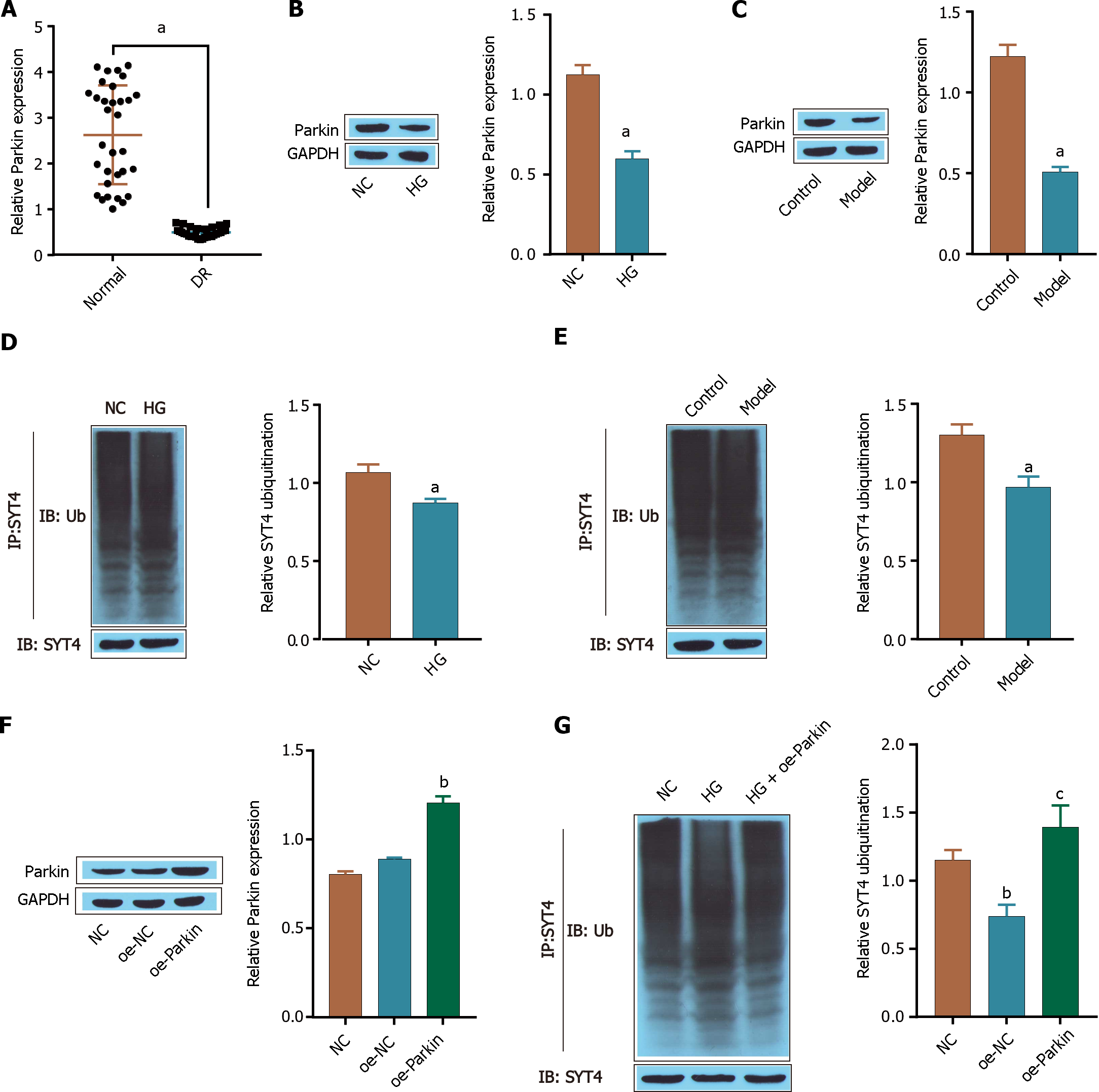Copyright
©The Author(s) 2024.
World J Diabetes. May 15, 2024; 15(5): 958-976
Published online May 15, 2024. doi: 10.4239/wjd.v15.i5.958
Published online May 15, 2024. doi: 10.4239/wjd.v15.i5.958
Figure 4 Parkin promotes the ubiquitination and degradation of synaptotagmins 4.
A: reverse transcriptase-polymerase chain reaction was used to measure the expression of Parkin; B: Western blot was used to detect the expression of Parkin in cells; C: Western blot was used to determine the expression of Parkin in the tissues of the mice; D: Western blot was used to determine the level of synaptotagmins 4 (SYT4) ubiquitination in cells; E: Western blot was used to determine the level of SYT4 ubiquitination in the tissues of mice; F: The transfection efficiency of oe-Parkin was detected via Western blot; G: The level of SYT4 ubiquitination in cells was detected via Western blot. aP < 0.05, bP < 0.01, cP < 0.001, vs normal group, control group, NC group; cP < 0.001, vs HG group. SYT: Synaptotagmins; DR: Diabetic retinopathy; TNF-α: Tumour necrosis factor alpha; IL: Interleukin.
- Citation: Xu H, Zhang LB, Luo YY, Wang L, Zhang YP, Chen PQ, Ba XY, Han J, Luo H. Synaptotagmins family affect glucose transport in retinal pigment epithelial cells through their ubiquitination-mediated degradation and glucose transporter-1 regulation. World J Diabetes 2024; 15(5): 958-976
- URL: https://www.wjgnet.com/1948-9358/full/v15/i5/958.htm
- DOI: https://dx.doi.org/10.4239/wjd.v15.i5.958









